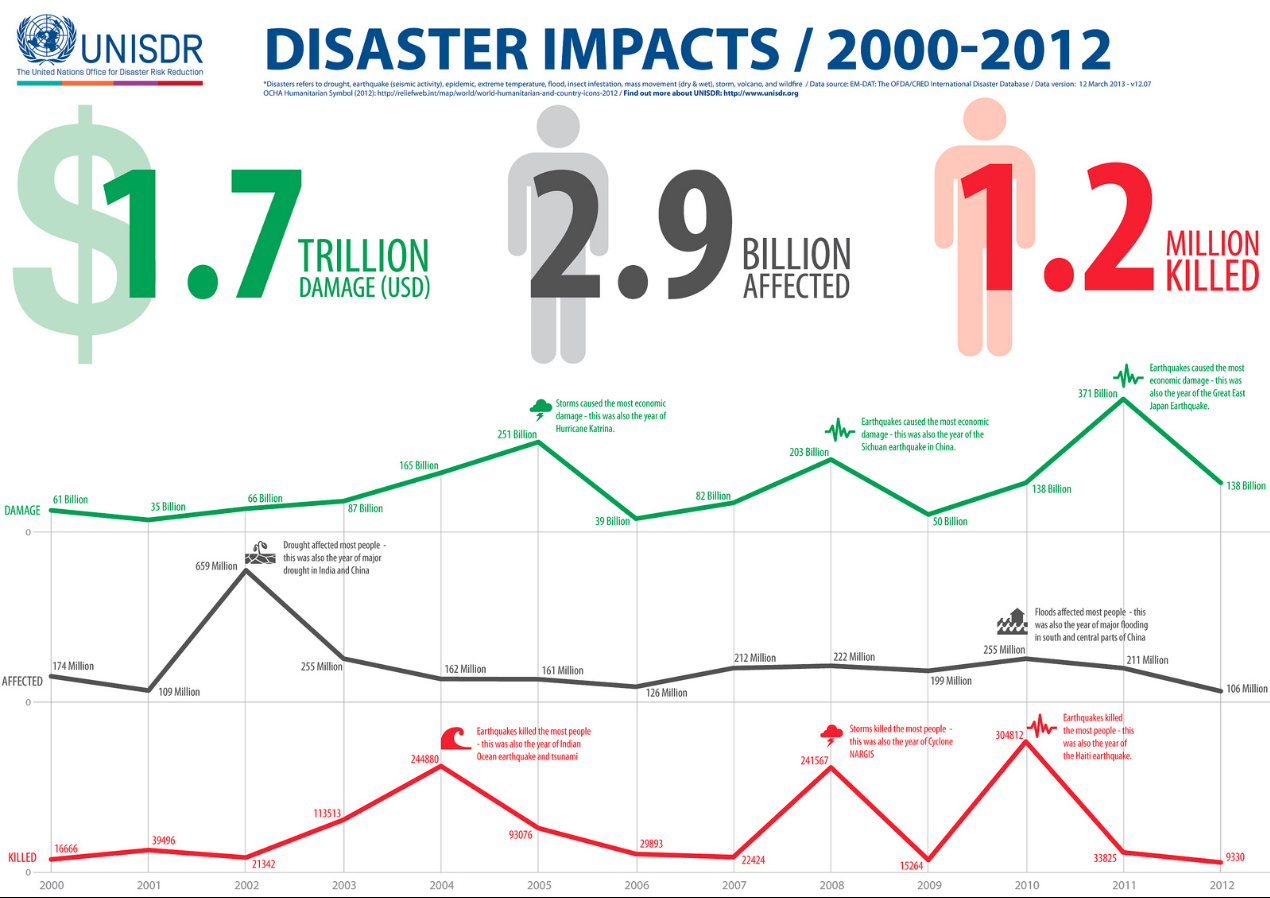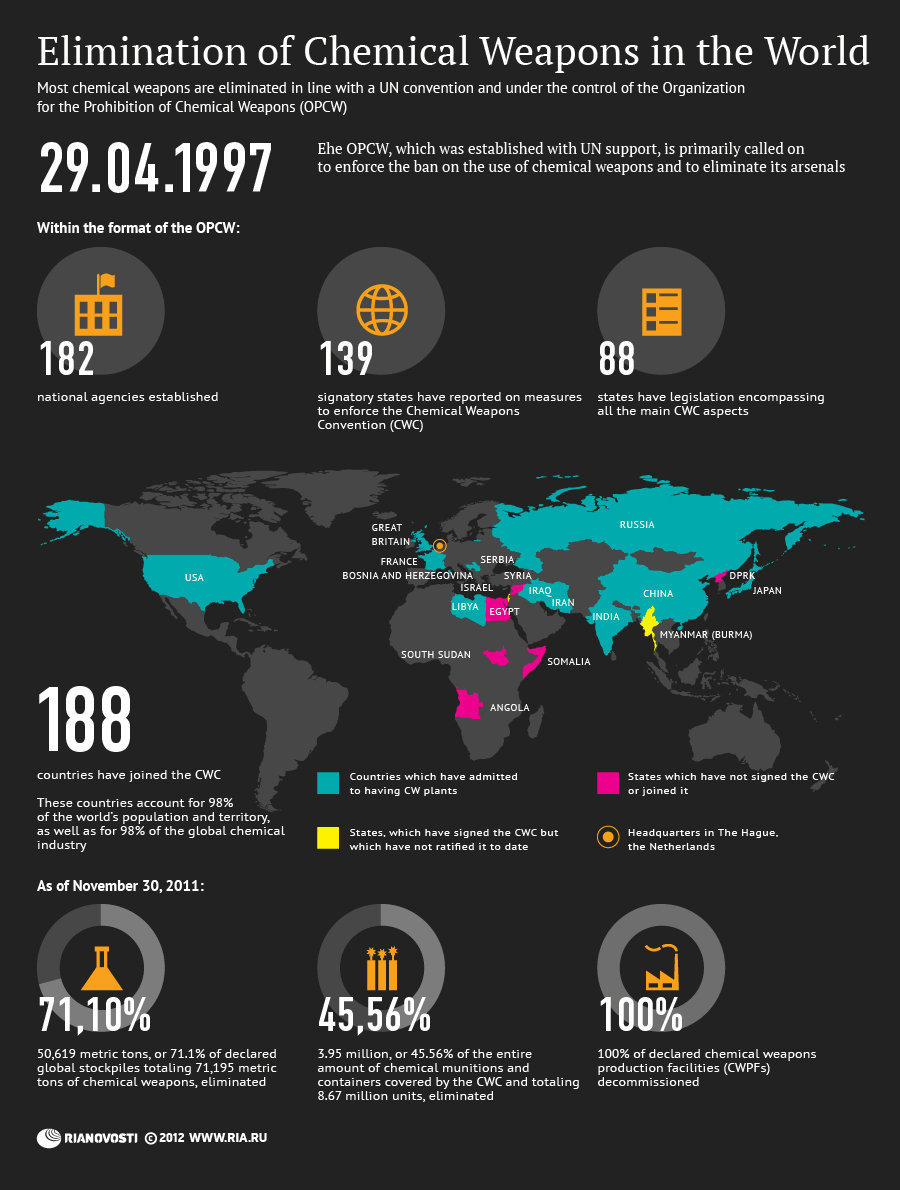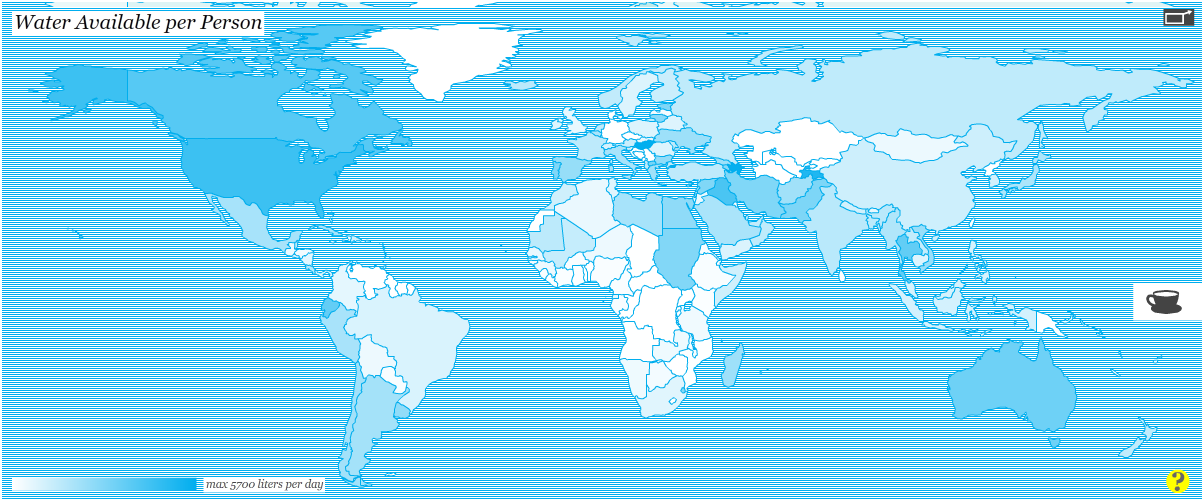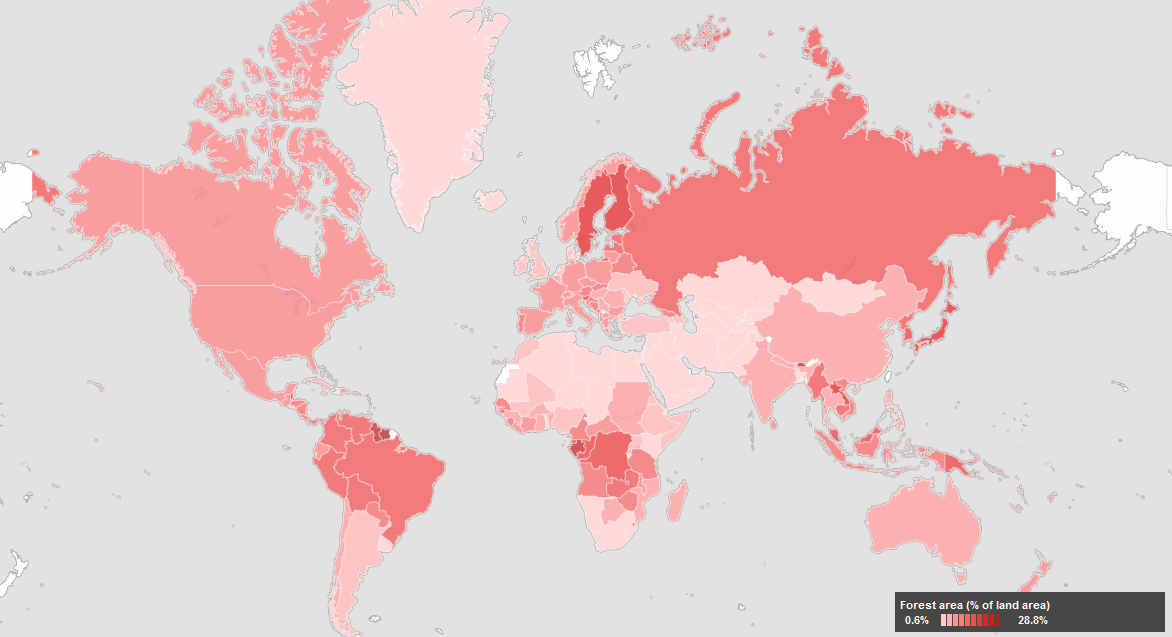 This visualization by the United Nations Office of Disaster Risk Reduction (UNISDR) shows the impact of natural disasters in the period 2000-2012.
This visualization by the United Nations Office of Disaster Risk Reduction (UNISDR) shows the impact of natural disasters in the period 2000-2012.
Between 2009 and 2011 the economic cost of disasters increased from $50 billion to $371 billion due to the 2011 Great East Japanese Earthquake. The largest number of people killed occurred in the period 2009-2010, mainly due to earthquakes, including the 2010 Haiti earthquake. The largest number of people affected in the last twelve years occurred between 2001 and 2002, mainly due to droughts, including droughts in China and India.
Source: United Nations on Tumbler


